|
|
|
This page of the Building Stone website visits the Mosel (or Moselle in more French tones) Valley in western Germany. We'll follow the Mosel from Trier (almost in Luxemburg) to Koblenz (at the confluence of the Mosel and the Rhine). Specifically, we will visit many buildings of slate, an unusual building stone, and look at the them in the context of outcrops along the Mosel Valley.
We'll begin in the village of Thörnlich with this house. In addition to the slate, note the red sandstone that frames both the windows and the niche for the statue:
|
|
|
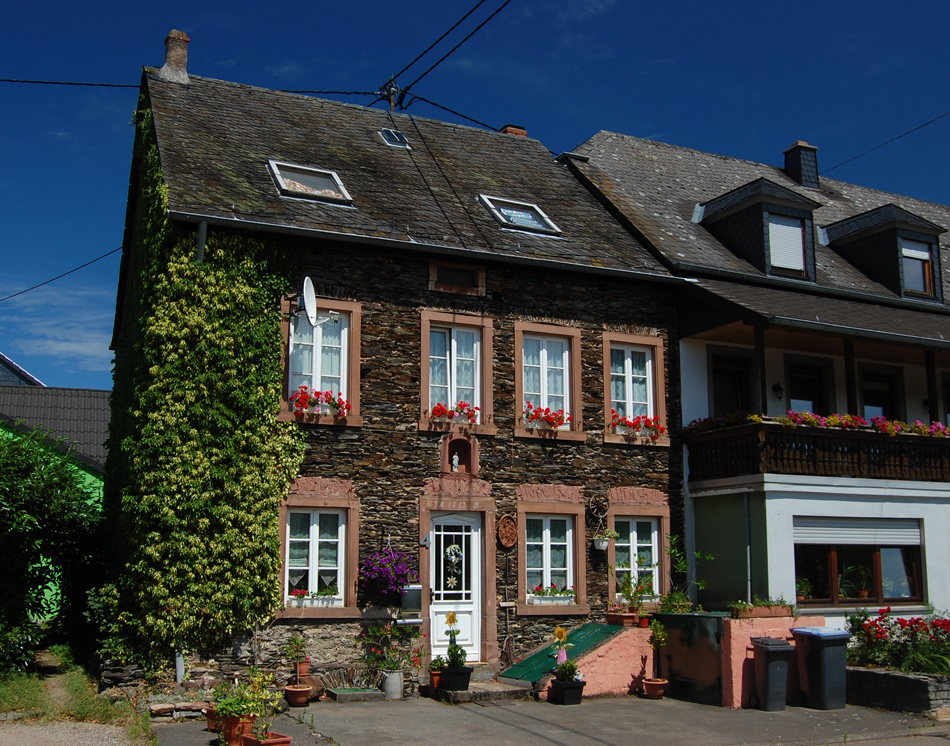
|
|
|
|
Here's a view of the slate itself. Note the irregular elongate stones - essentially slivers of slate - dictated by the cleavage of slate into subplanar pieces.
|
|
|
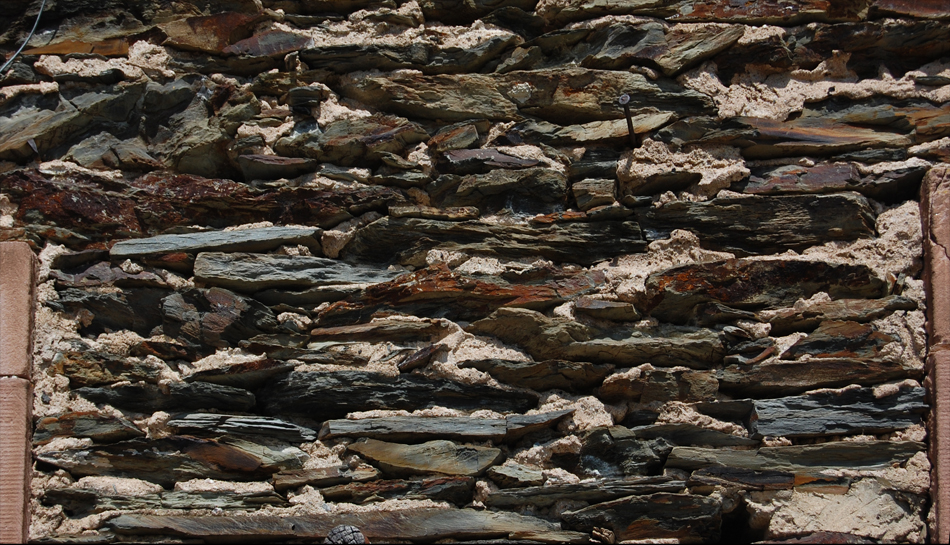
|
|
|
|
With that start, we can move down-valley to the town of Neumagan, and to this house:
|
|
|
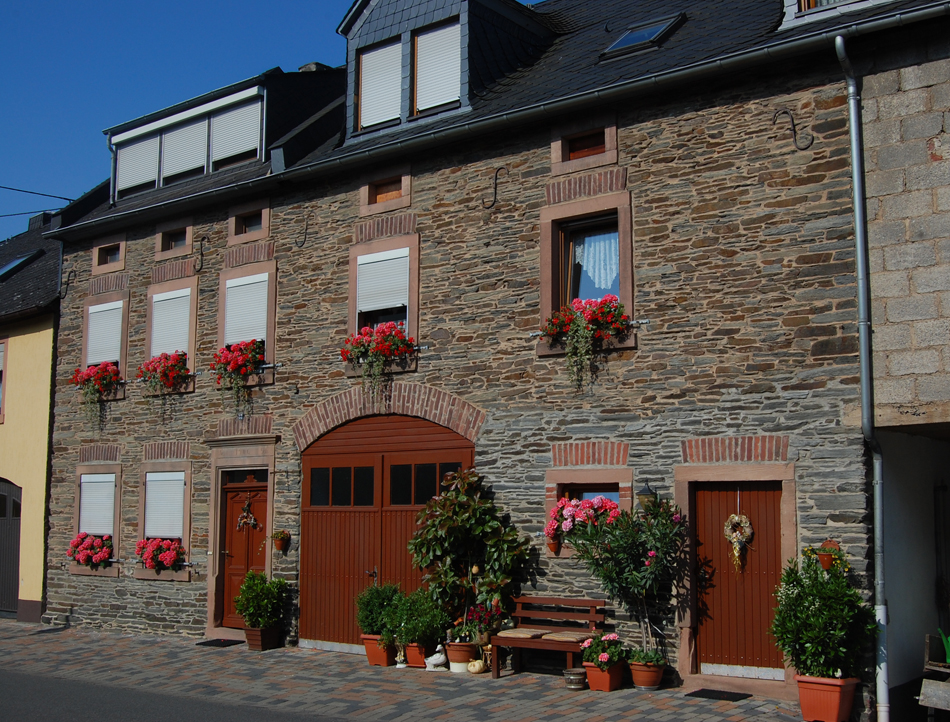
|
|
|
|
This house features slate ranging from large blocks to small slivers, and thus a mortar-rich look:
|
|
|
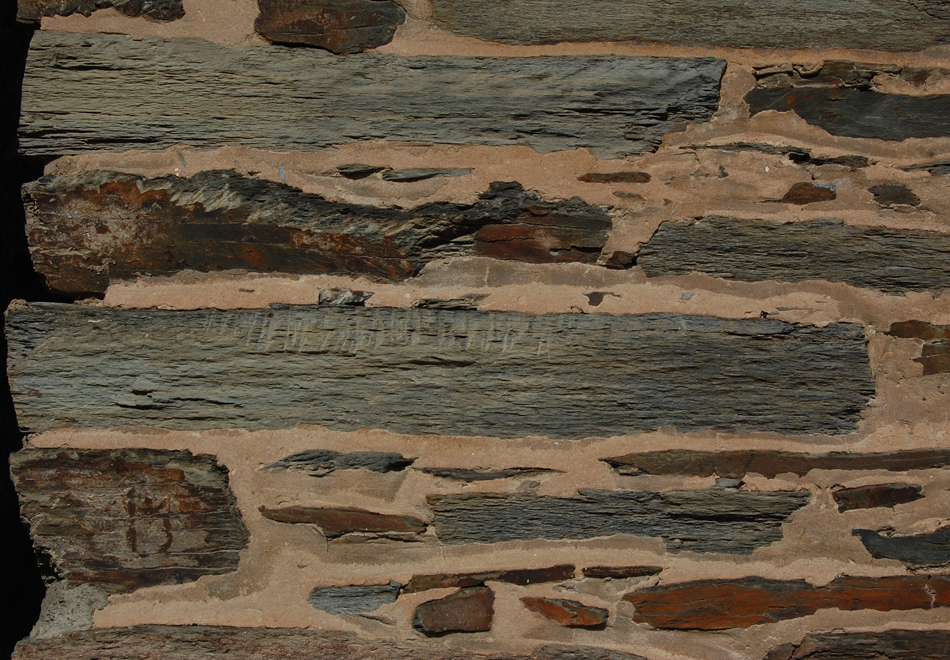
|
|
|
|
Here's another house in Neumagan. It seems to have more regular stone than the houses we've seen thus far:
|
|
|
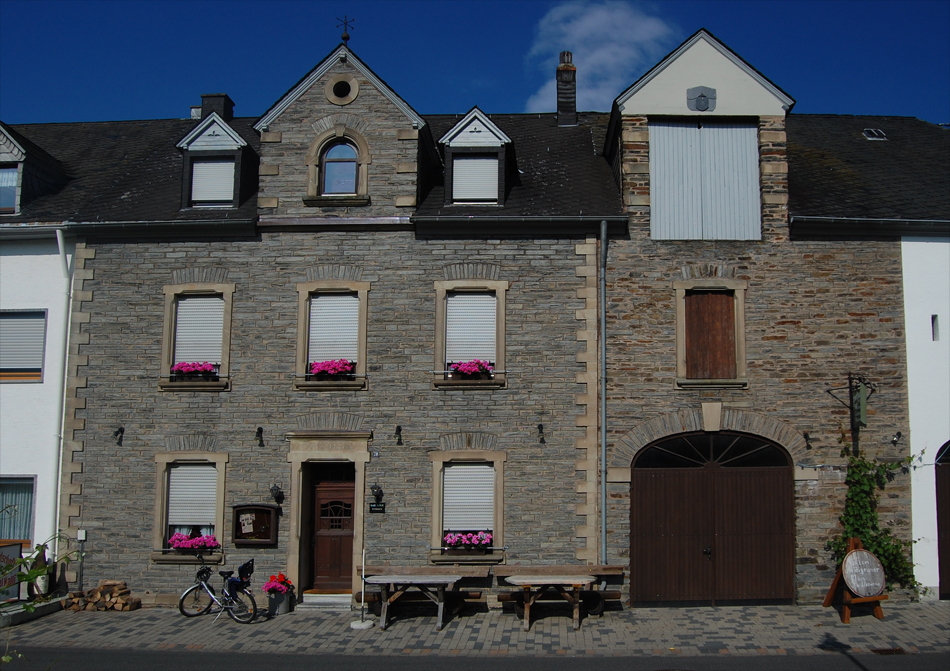
|
|
|
|
. . . but it doesn't! Much mortar has been used, and orthogonal lines traced in the mortar, to give the look of a brick-like stone wall, but in fact the stones are still the irregular slivers and chunks that we've seen before. Note the two "blocks" in each of the upper two rows that are in fact each two chunks of slate:
|
|
|
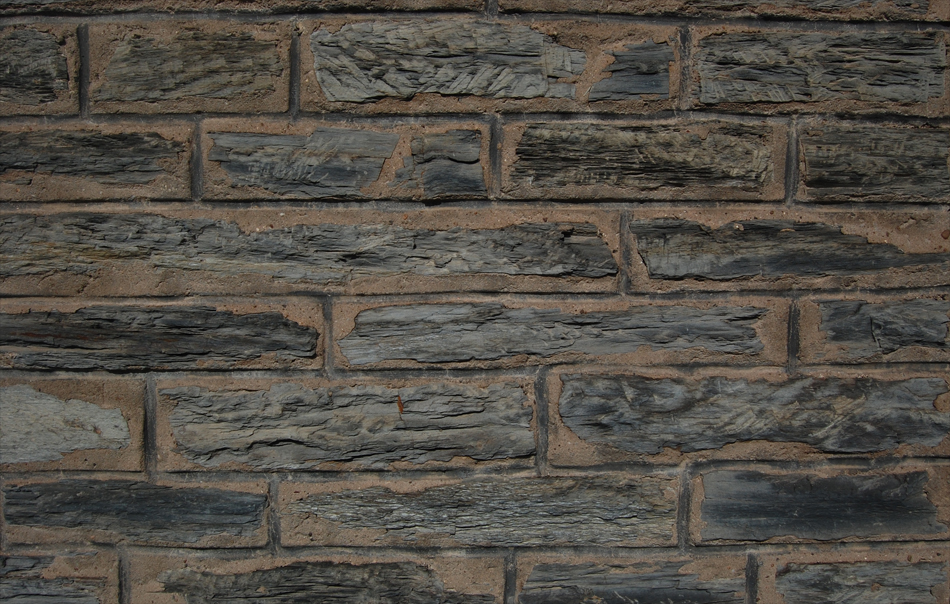
|
|
|
|
As we go on down the Mosel, here's a distant view of a slate house in Piesport. The Mosel Valley is famous for its white wines, and so every arable inch of land is vineyards like those seen behind this house.
|
|
|
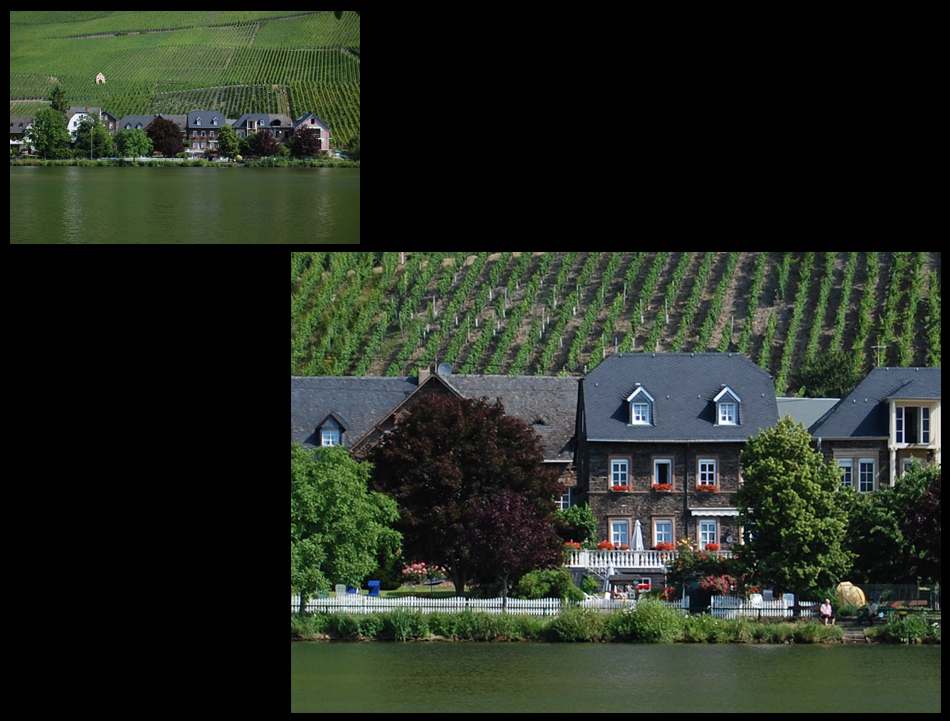
|
|
|
|
Farther down-valley, in Bernkastel, we find this building, probably originally a hotel, built of slate and again trimmed with red sandstone:
|
|
|
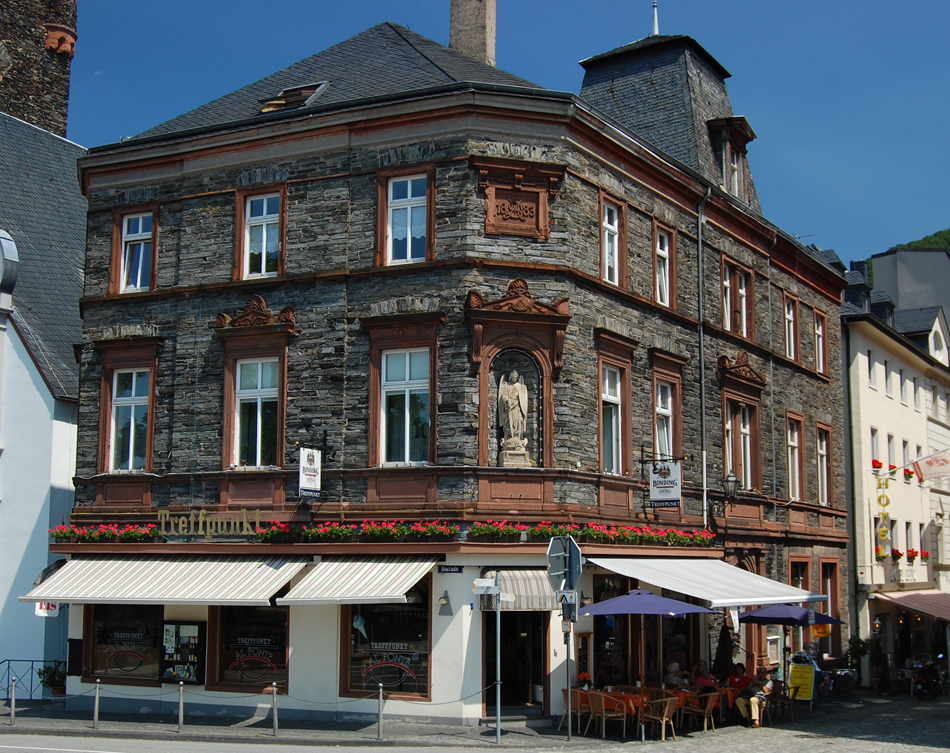
|
|
|
|
. . . and on down-valley to this tower in Zell. The stone seems to be getting a bit more blocky and regular, and lithologically moving from slate to a (meta-)siltstone.
|
|
|
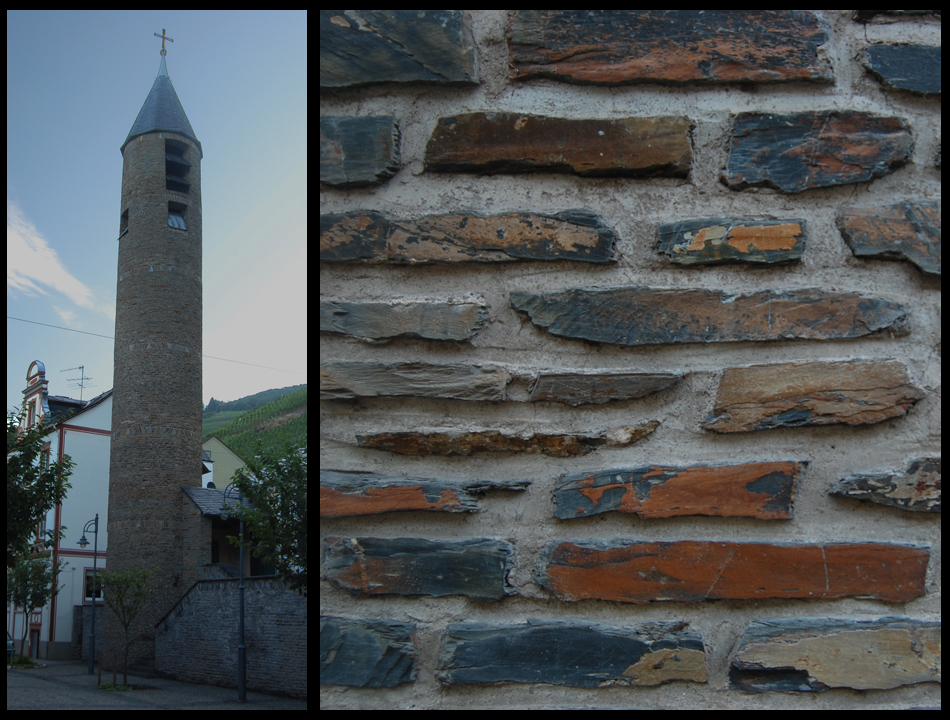
|
|
|
|
Farther down-valley in Karden, in Treis-Karden, this building's front face is like many in having more blocky-looking stone than what we've seen up-valley:
|
|
|
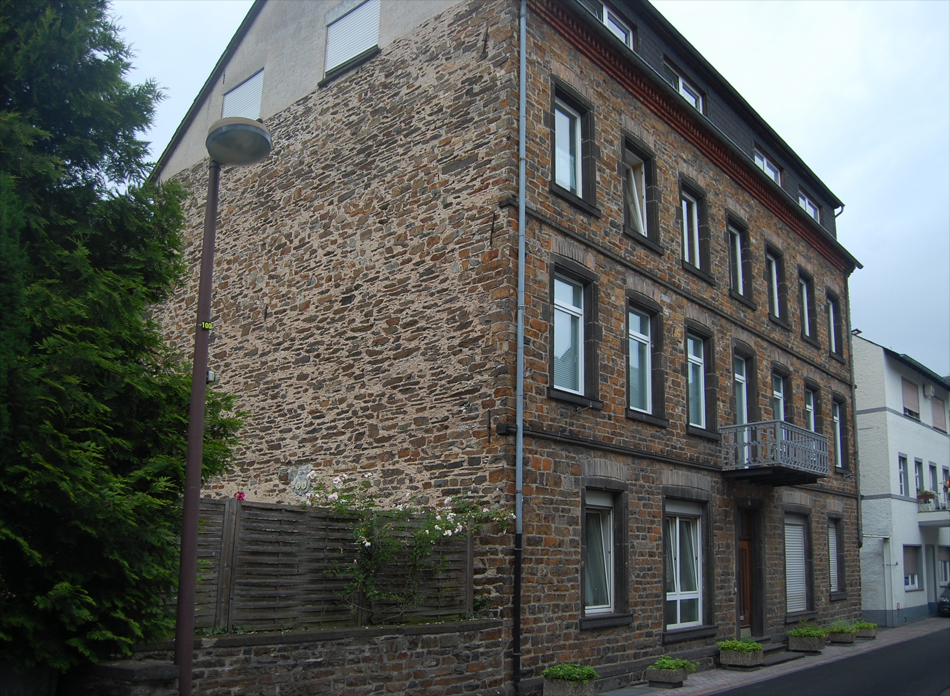
|
|
|
|
. . . and indeed that's true - for the front of building. The sides, however, consist of some of the most ratty slate we've seen on this trip:
|
|
|
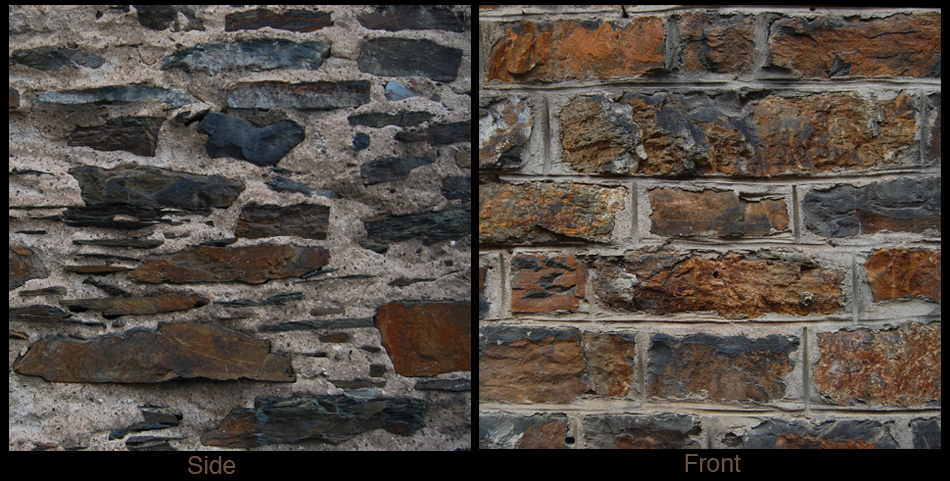
|
|
|
|
Farther down-valley in Hatzenport we find this Fährturm or ferry-tower, a structure used to full ferry-boats back and forth across the river. The tower is built of slate and meta-siltstone, much of which is blocks rather than slivers:
|
|
|
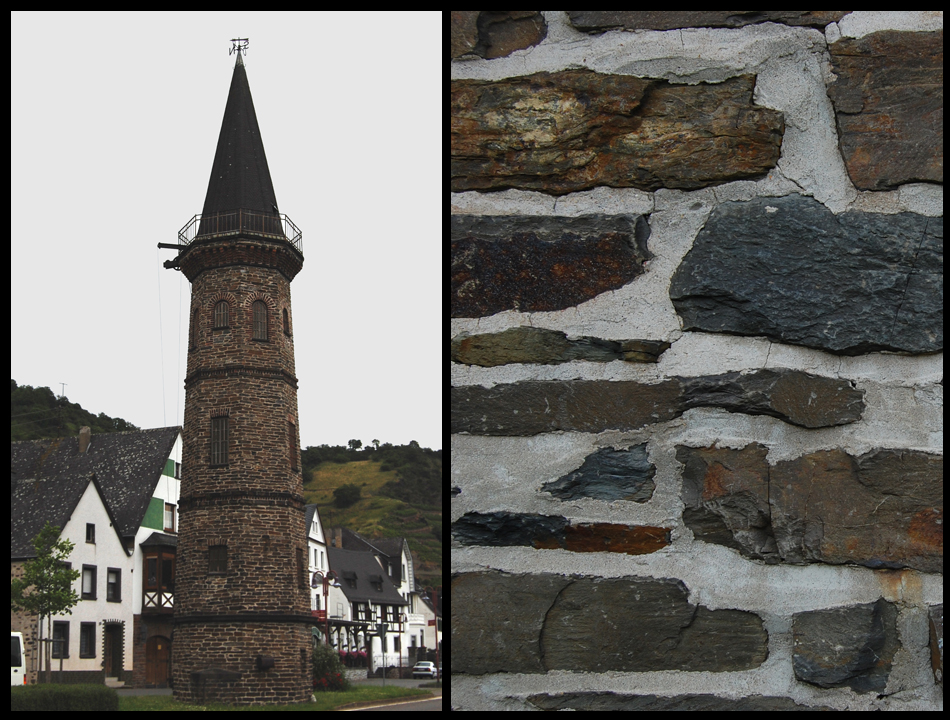 |
|
|
|
If we've increasingly seen larger and blockier stone in our trip down the Mosel Valley, our last stop will counter that trend, perhaps because it's an older structure. It's a house associated with Schloss Liebieg in Gondorf (or Kobern-Gondorf). It's notable not only for the use of slate in an old-fashioned building . . .
|
|
|
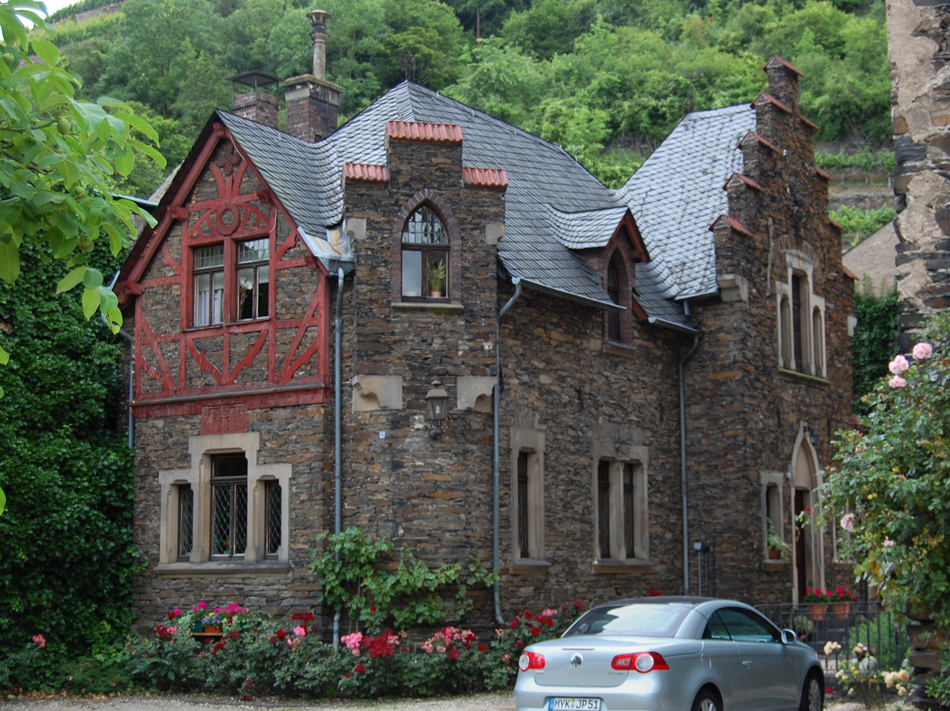
|
|
|
|
. . . but also for the lack of mortar used here, compared to some of the mortar-rich work that we've seen in younger structures up-valley. This stone is nearly dry-stacked:
|
|
|
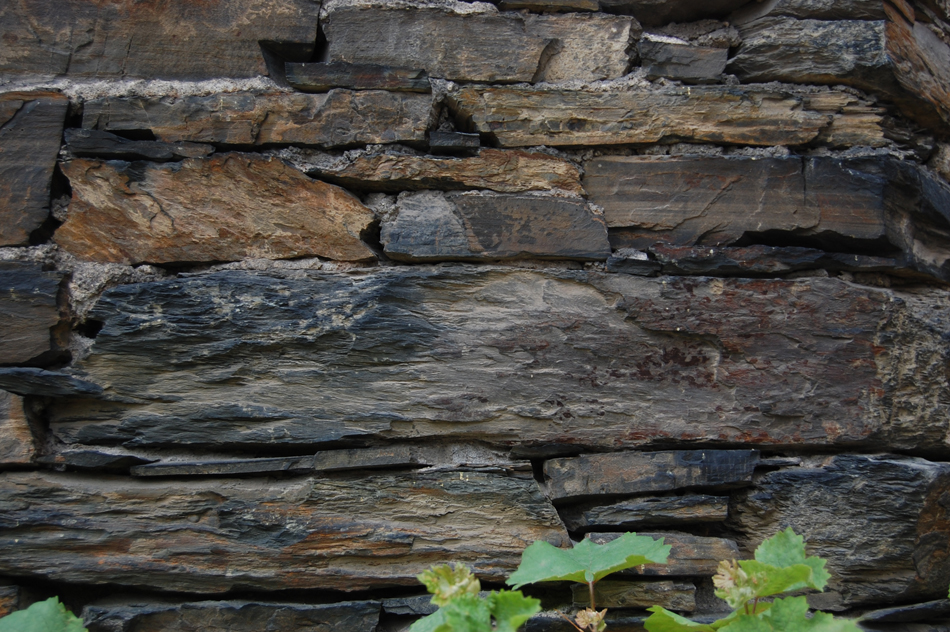
|
|
|
|
Another feature of the old house above is its slate roof. Every structure that we've seen so far has had a slate roof, but the slate roof catches the light nicely in the image above. Thus every structure that we've seen has doubly been built of slate, with coarse mortared slate for the walls and thin slate shingles for the roof. However, it's not uncommon to see buildings shingled with slate on sides as well as roofs, as in this example back up the valley in Neumagen:
|
|
|
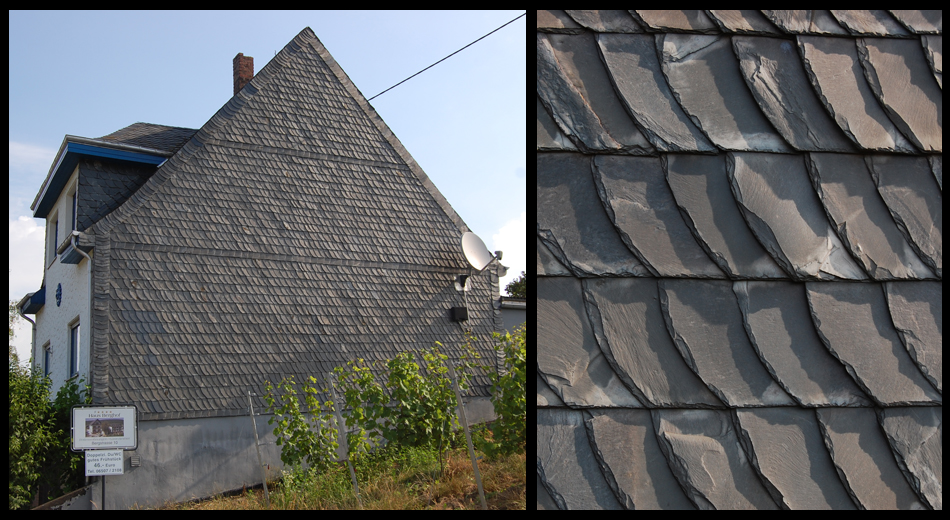
|
|
|
|
We've made our tour, and we've seen several slate houses, with a bit of a trend toward see larger and more well-defined blocks as we've gone down-valley. That seems to be correlative with the nature of the bedrock as seen in outcrop. Outcrops up-valley tend to be lumpy things with little structure, like this example between Zeltingen and Zell:
|
|
|
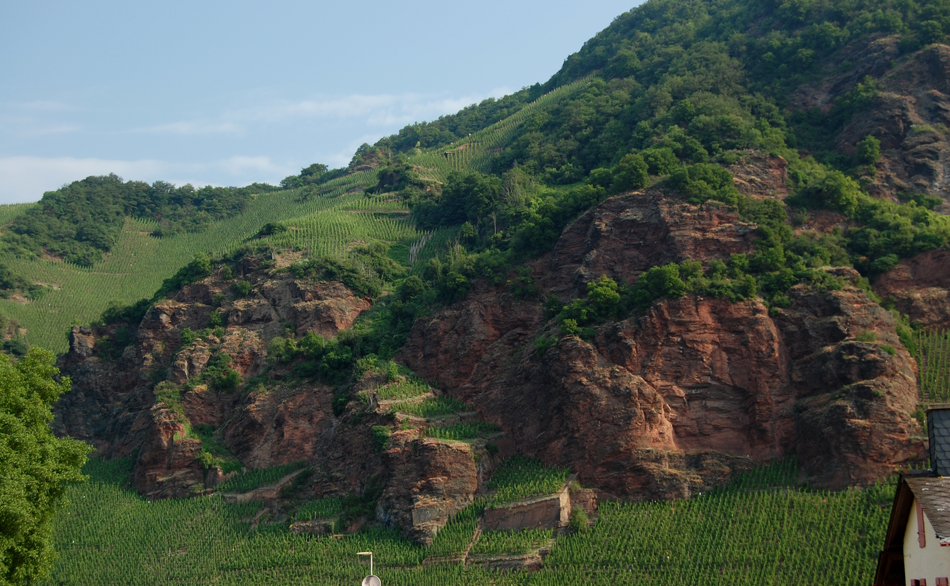
|
|
|
|
On the other hand, outcrops down-valley show more distinct bedding, as in this example between Hatzenport and Kobern:
|
|
|
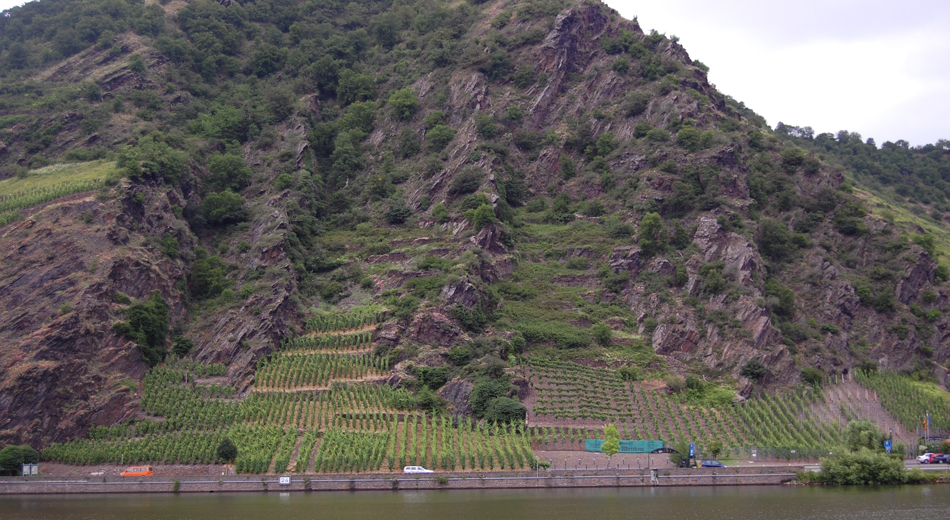
|
|
|
|
The increasingly coherence seen in outcrops down-valley is thus reflected in the increasingly blockiness of the stone used in buildings down-valley. That's probably not a coincidence: Slate commonly weathers to give a ratty outcrop of splintery stone, whereas (meta-)siltstone is more resistant to weathering and thus yields more coherent outcrops, and more blocky building stone. Thus as we progress down-valley through sediments deposited as clays (the slates of today) to silts (our meta-siltstones), we see a progression in the outcrops and in the stone of these handsome old buildings.
In addition, we've commonly seen red sandstone used as trim in these buildings. That sandstone probably comes from up-river near Trier, where there are large outcrops and quarries of red sandstone. For example, here's a view over the Mosel not far downriver from Trier:
|
|
|
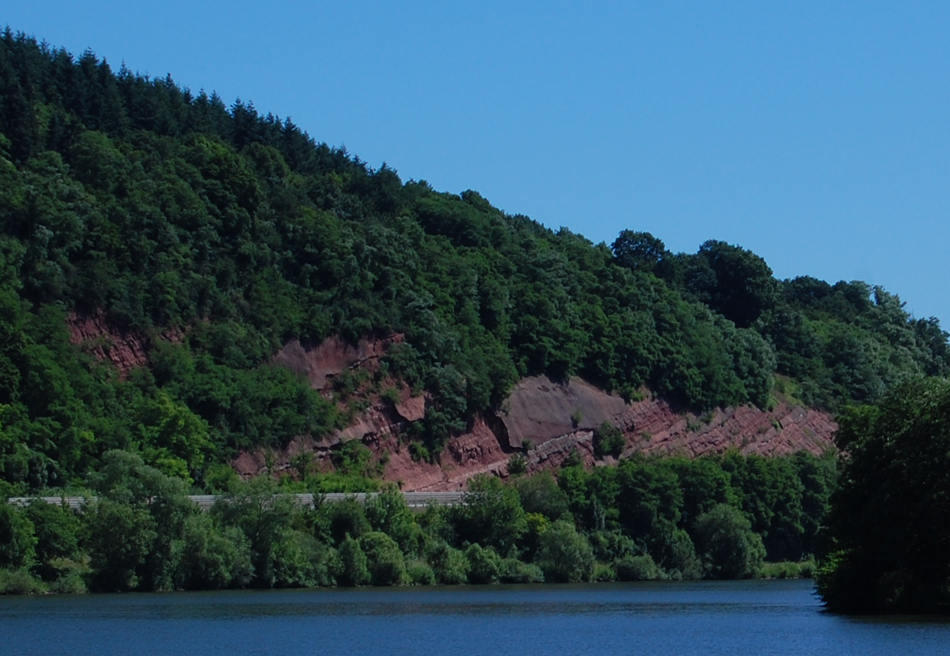
|
|
|
| That pretty image provides us a nice stopping point for our tour of slate (and sandstone) structures in the Mosel Valley. Auf Wiedersehen!
|
|
|
|
|
















